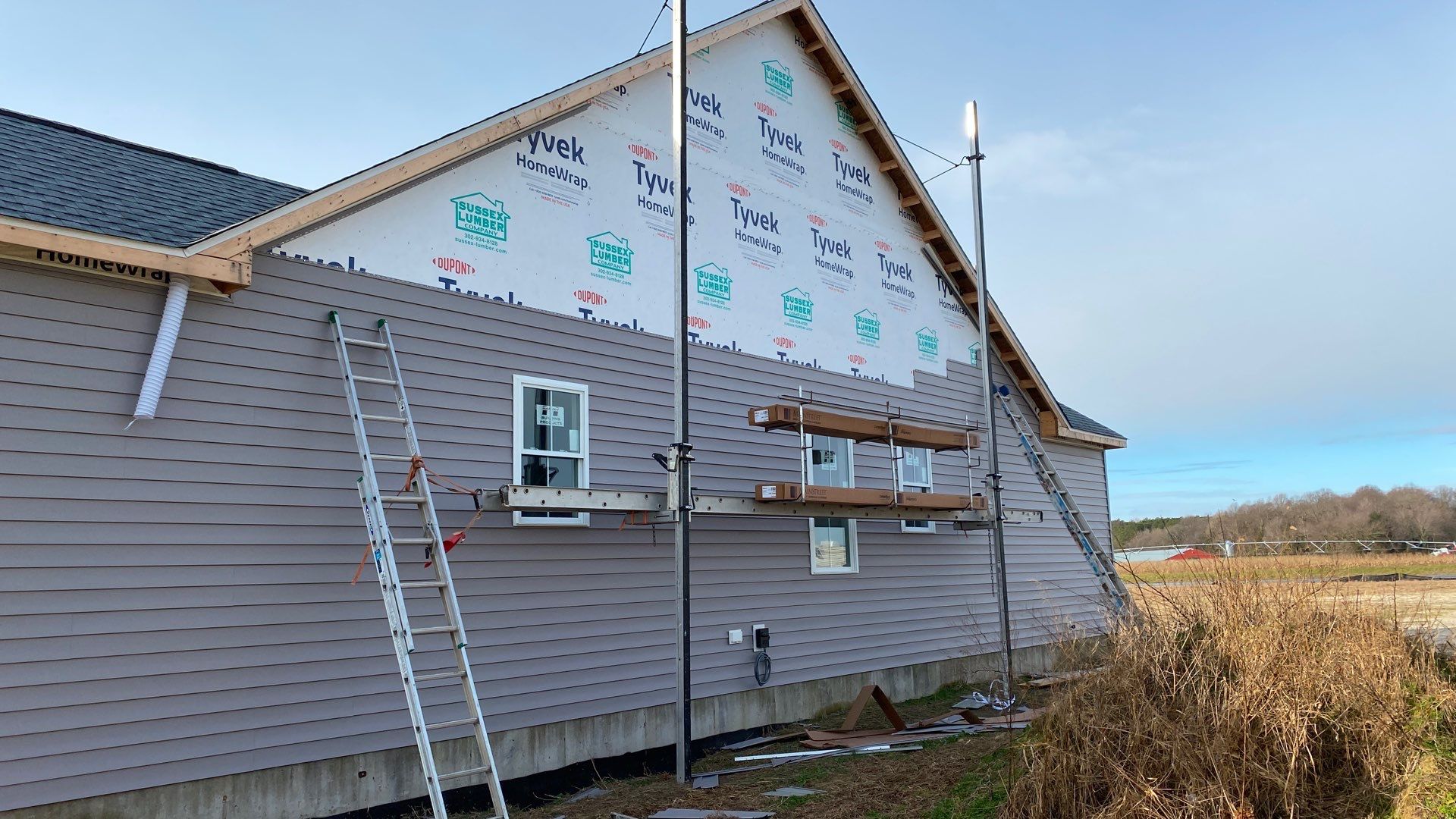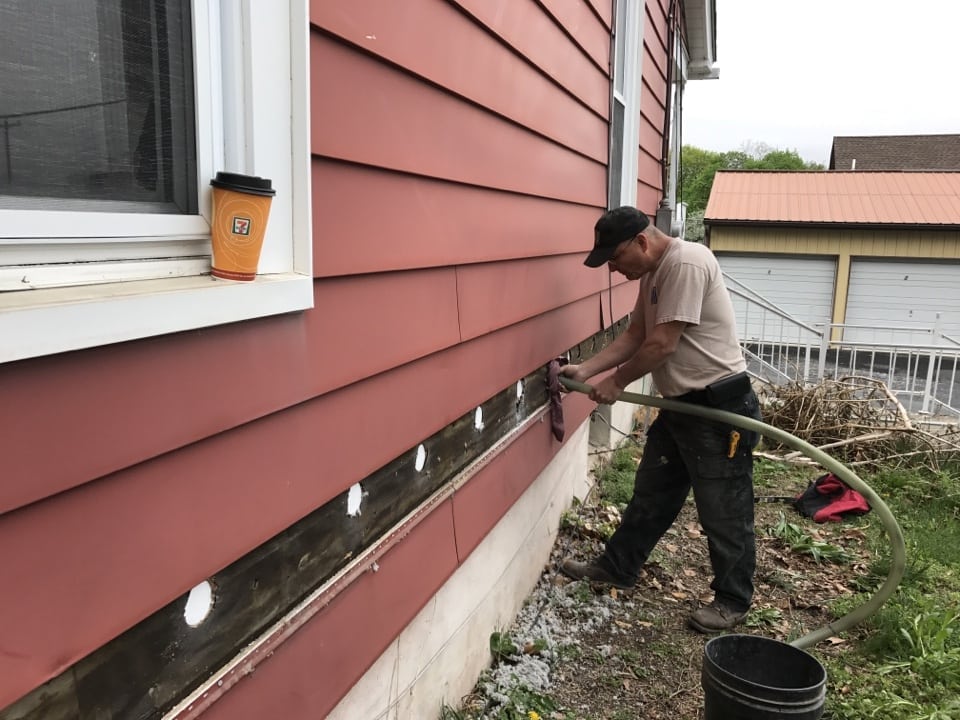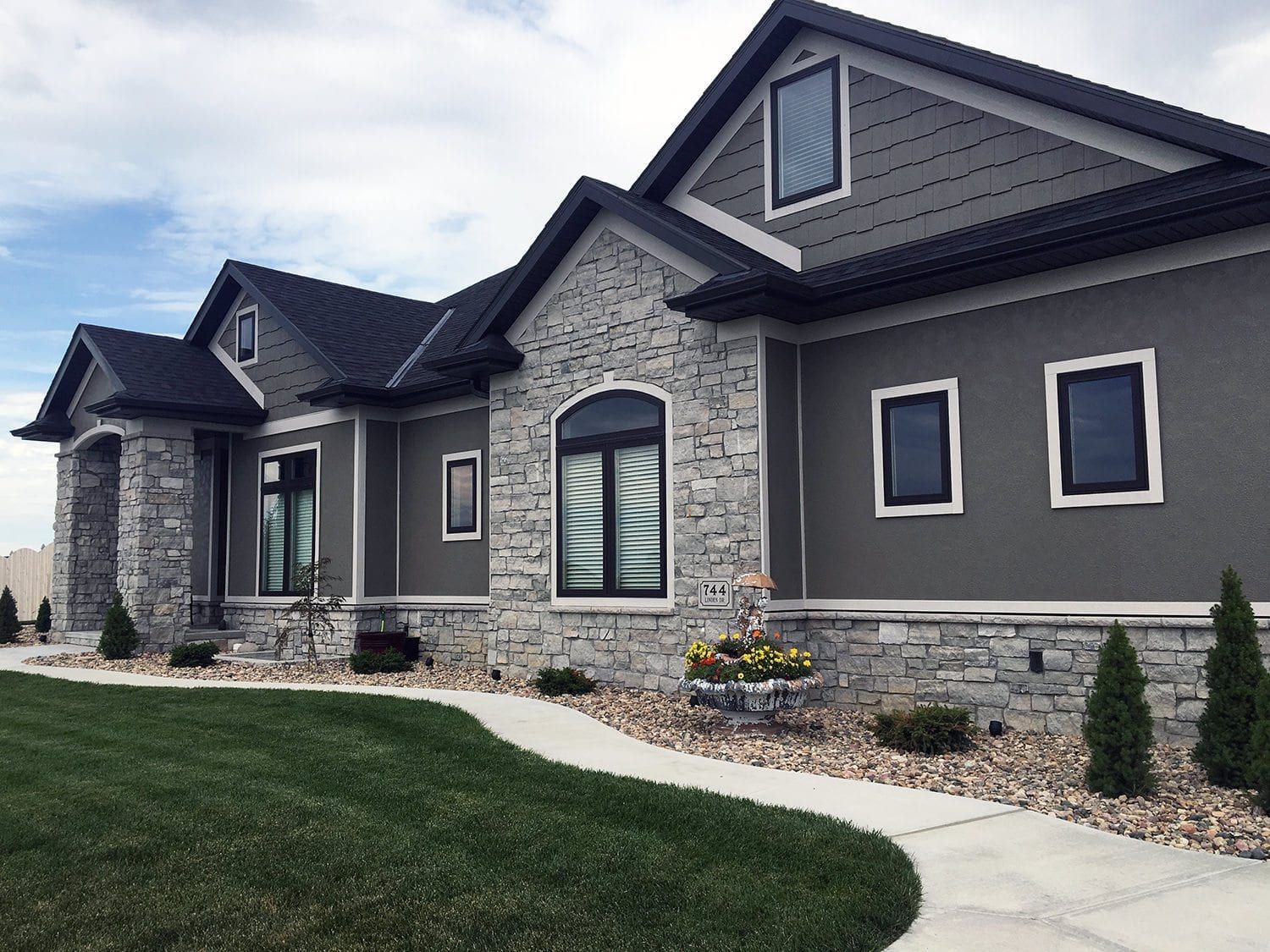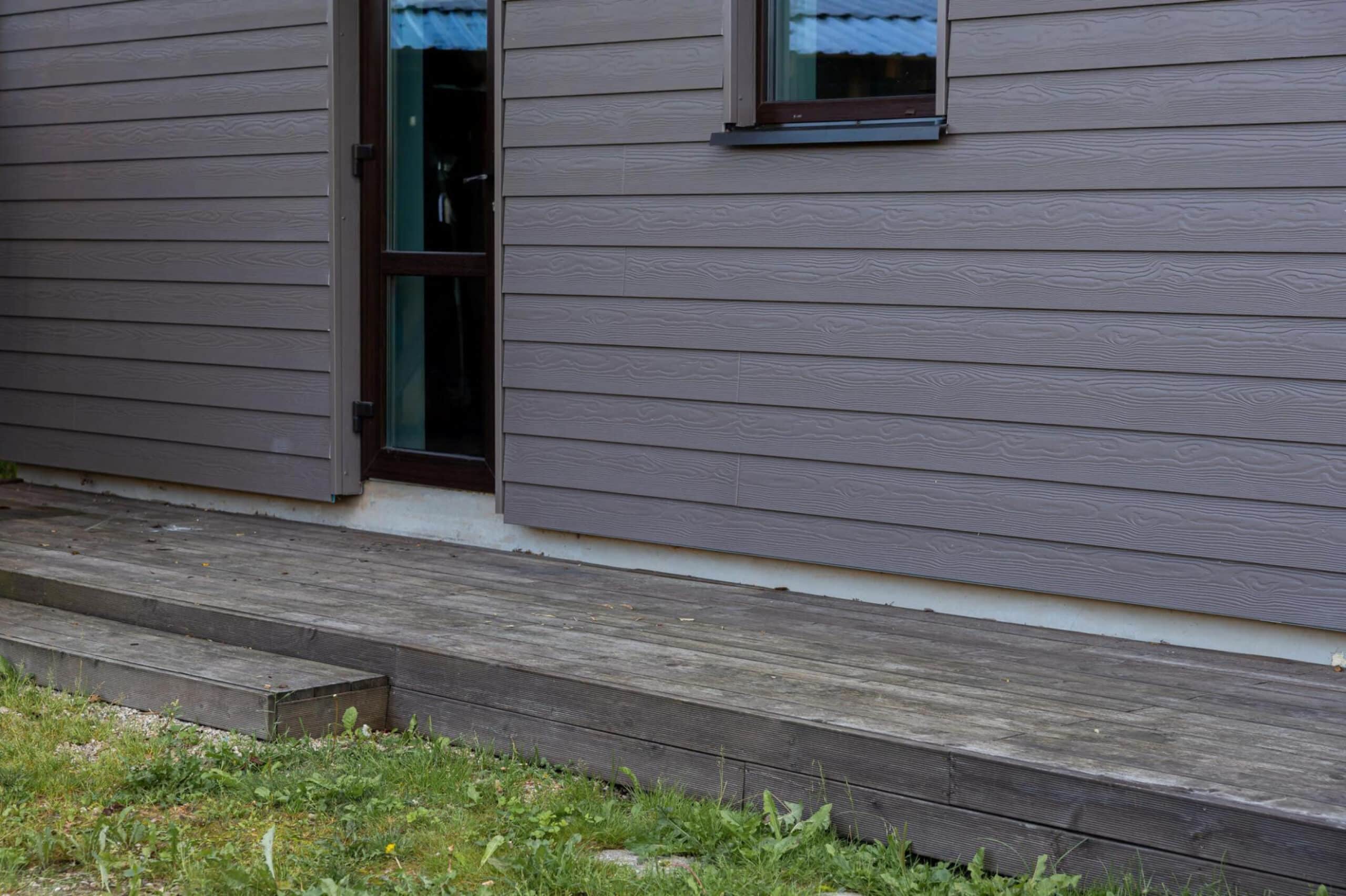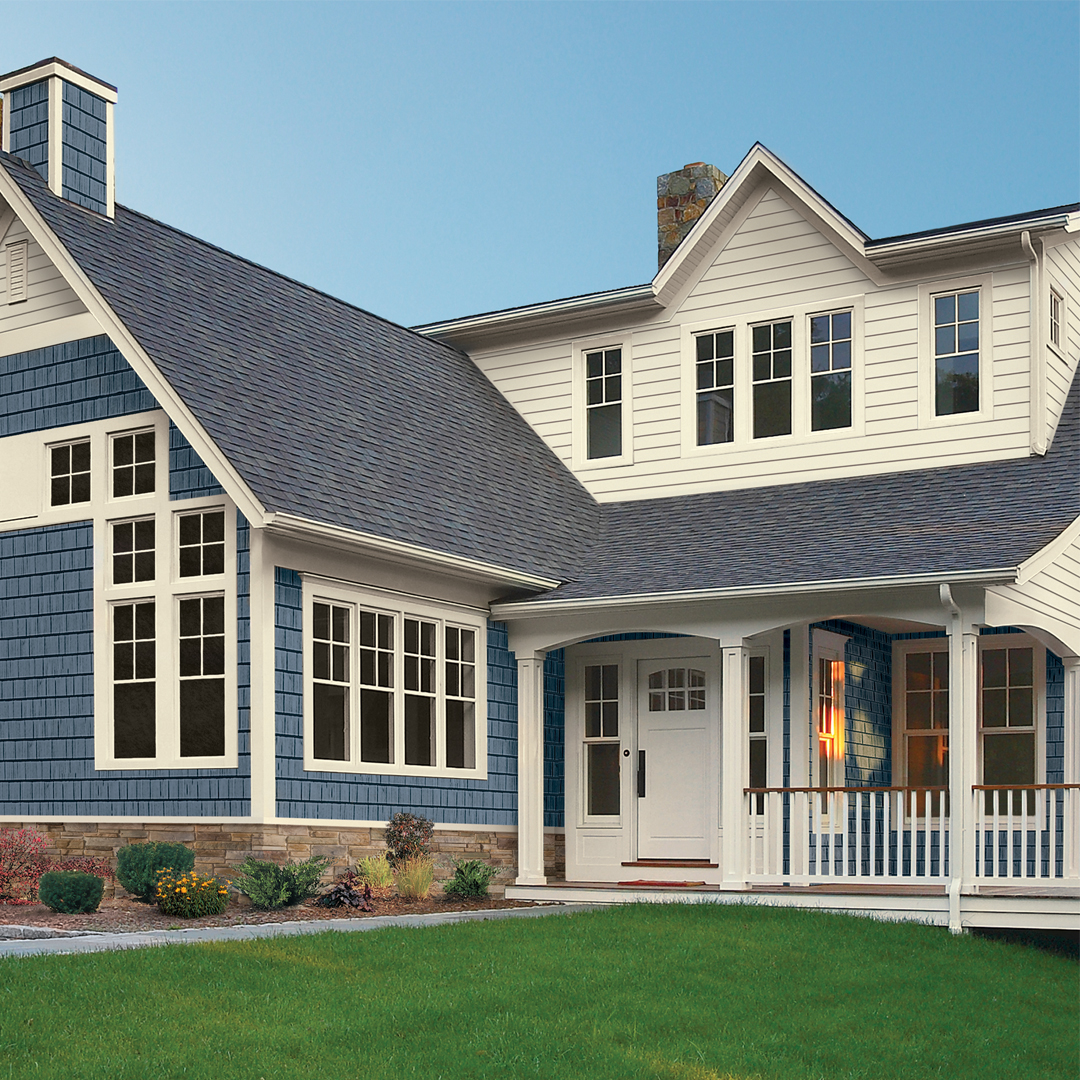Insulated Siding for Noise Reduction
Insulated siding for noise reduction offers a compelling solution for homeowners seeking a quieter living environment. Beyond simply improving aesthetics, this upgrade provides significant acoustic benefits, transforming a noisy home into a peaceful sanctuary. This exploration delves into the various types of insulated siding, their installation, and the overall impact on noise reduction, ultimately guiding you toward an informed decision.
We’ll examine the different materials available, from vinyl and fiber cement to foam-core options, comparing their R-values, costs, and effectiveness in dampening sound. Understanding the installation process, including crucial sealing techniques, is key to maximizing noise reduction. We will also consider environmental factors and explore how to calculate the return on investment for this home improvement project. By the end, you’ll have a comprehensive understanding of how insulated siding can contribute to a more tranquil and energy-efficient home.
Types of Insulated Siding for Noise Reduction
Insulated siding offers a multifaceted approach to home improvement, enhancing both energy efficiency and sound insulation. The selection of the right type depends on factors such as budget, aesthetic preferences, and the desired level of noise reduction. Understanding the different materials and their properties is crucial for making an informed decision.
Insulated Siding Materials and Their Acoustic Properties
Several materials are used in the construction of insulated siding, each contributing differently to noise reduction. Vinyl siding, a popular choice for its affordability and low maintenance, typically incorporates a foam backing to enhance insulation. Fiber cement siding, known for its durability and fire resistance, can also be manufactured with an insulating core. Foam core siding, often featuring polyurethane or polyisocyanurate foam, provides superior insulation and sound dampening capabilities compared to other options. The R-value, a measure of thermal resistance, is often used as a proxy for noise reduction effectiveness, though it’s not a direct correlation. Higher R-values generally indicate better insulation, and while this often translates to improved sound dampening, the material’s density and construction also play significant roles.
R-Value and Noise Reduction
The R-value of insulated siding reflects its resistance to heat transfer. While not a direct measure of sound transmission loss (STL), a higher R-value often correlates with better noise reduction. This is because materials with higher thermal resistance tend to be denser and more effective at blocking sound waves. For example, foam core siding, with R-values typically ranging from R-7 to R-10 or higher depending on thickness, offers superior noise reduction compared to vinyl siding with a lower R-value (often around R-4 to R-6). However, the acoustic performance is not solely determined by the R-value; the density and construction of the material are equally important factors.
Thermal and Acoustic Performance Comparison
The thermal and acoustic performance of different siding types are interconnected but not perfectly aligned. A material with excellent thermal insulation might not necessarily be the best sound insulator. For instance, foam core siding excels in both thermal and acoustic performance due to its high R-value and dense structure. Vinyl siding, while offering decent thermal insulation, may not be as effective at noise reduction as foam core or fiber cement options. Fiber cement, although a strong material, may have lower R-values than foam core, impacting both thermal and acoustic performance. The overall performance depends on a combination of factors, including the material itself, its thickness, and the installation method.
Comparison of Insulated Siding Types
| Material | Typical R-Value | Approximate Cost (per sq ft) | Noise Reduction Effectiveness |
|---|---|---|---|
| Vinyl (with foam backing) | R-4 to R-6 | $3-$6 | Moderate |
| Fiber Cement (with foam core) | R-6 to R-8 | $7-$12 | Good |
| Foam Core (Polyurethane or Polyisocyanurate) | R-7 to R-10+ | $10-$15+ | Excellent |
| Wood (with added insulation) | R-4 to R-8 (variable) | $8-$15+ | Good to Excellent (depending on insulation type and thickness) |
Installation Techniques and Noise Reduction
Proper installation of insulated siding is crucial for achieving optimal noise reduction. A poorly installed system, even with high-quality materials, will fail to deliver the expected sound dampening benefits. Careful attention to detail throughout the installation process is paramount.
The effectiveness of insulated siding in reducing noise hinges significantly on minimizing air gaps and ensuring a continuous, airtight barrier. Sound waves readily travel through air, so any openings or cracks in the siding system create pathways for noise transmission. A well-sealed installation effectively blocks these pathways, significantly reducing the amount of noise that penetrates the building’s exterior.
Step-by-Step Insulated Siding Installation for Noise Reduction
This guide outlines a typical installation, focusing on noise reduction best practices. Specific procedures may vary slightly depending on the siding material and manufacturer’s instructions. Always refer to the manufacturer’s guidelines for your chosen product.
- Preparation: Begin by thoroughly cleaning the existing wall surface, removing any loose debris, paint chips, or old siding. This ensures proper adhesion and prevents air gaps behind the new siding.
- Vapor Barrier Installation (if applicable): If using a vapor barrier, install it carefully, ensuring it’s completely sealed to prevent moisture intrusion, which can affect both insulation performance and the longevity of the siding. Overlapping seams should be sealed with appropriate tape.
- Framing and Furring Strips: Install furring strips (thin wooden strips) over the existing wall to create a space for insulation and to ensure a consistent and even surface for the siding. This also helps to further reduce sound transmission.
- Insulation Placement: Carefully fit insulation panels into the space created by the furring strips. Ensure a snug fit to minimize air gaps. Consider using denser insulation materials for superior sound absorption.
- Siding Installation: Install the insulated siding panels according to the manufacturer’s instructions, ensuring proper overlapping and alignment. Use appropriate fasteners and ensure they are adequately secured to prevent rattling and movement which can transmit sound.
- Sealing Gaps and Cracks: Meticulously seal all gaps and cracks between siding panels, around windows and doors, and at any penetrations using high-quality sealant. This is a critical step for noise reduction. Pay special attention to corners and edges.
- Finishing Touches: Install trim and accessories, ensuring a neat and weatherproof finish. Again, seal any remaining gaps to maintain a sound barrier.
Common Installation Mistakes Compromising Noise Reduction
Several common mistakes during installation can significantly reduce the effectiveness of insulated siding in blocking noise. Avoiding these errors is essential for achieving optimal results.
- Insufficient sealing around windows and doors: These areas are common points of sound leakage. Failure to properly seal around them negates much of the sound-dampening benefit of the siding.
- Improper insulation installation: Gaps and inconsistencies in insulation placement allow sound to pass through. Ensure a continuous and tightly-packed layer of insulation.
- Loosely fastened siding: Rattling siding transmits sound more readily. Ensure all fasteners are securely driven and the siding is firmly attached.
- Ignoring air gaps behind the siding: Air gaps act as sound bridges. Ensure a continuous, airtight barrier behind the siding.
- Using low-quality sealant: A poor-quality sealant will not effectively seal gaps and cracks, allowing sound to penetrate.
Factors Affecting Noise Reduction with Insulated Siding
The effectiveness of insulated siding in reducing noise isn’t solely determined by the siding itself. Several environmental and material-related factors significantly influence its performance, impacting the overall sound dampening capabilities of the installed system. Understanding these factors is crucial for achieving optimal noise reduction.
Environmental Factors Affecting Noise Reduction
Environmental conditions, such as wind and rain, can influence the effectiveness of noise reduction provided by insulated siding. Strong winds can create vibrations in the siding material, potentially transmitting more sound energy into the building. Similarly, heavy rainfall can cause vibrations and dampen the insulating properties of the siding, reducing its noise-reduction efficacy. These effects are often more pronounced with thinner or less dense siding materials. The severity of these impacts depends on the intensity of the weather event and the quality of the installation.
Thickness and Density of Siding Material
The thickness and density of the siding material are key determinants of its sound absorption capabilities. Thicker and denser materials generally offer better sound insulation. This is because thicker materials provide more mass to absorb and reflect sound waves, while denser materials impede the transmission of sound energy more effectively. For instance, a thick, dense fiber cement siding will outperform a thin, less dense vinyl siding in terms of noise reduction. The mass law of acoustics, which states that sound transmission loss increases with increasing mass, directly applies here.
Role of Air Gaps and Insulation Layers
Air gaps and insulation layers play a critical role in reducing noise transmission through insulated siding. Air gaps, strategically placed within the wall assembly, help to decouple the siding from the underlying structure, reducing the transmission of vibrations. Insulation layers, such as fiberglass or mineral wool, absorb sound energy, further reducing the amount of noise that penetrates the building. The combination of air gaps and insulation creates a more effective barrier against sound waves, significantly enhancing noise reduction. A well-designed system incorporating both features is essential for maximizing performance.
Diagram Illustrating Sound Wave Interaction
Imagine a cross-section diagram of insulated siding. The outermost layer is the siding itself (e.g., fiber cement). Behind this, there is a noticeable air gap. Then comes a layer of rigid foam insulation, followed by the building’s exterior sheathing. Sound waves (represented as wavy arrows) initially strike the siding. Some of the sound energy is reflected back by the siding’s surface (shown as some arrows bouncing back). The remaining energy penetrates the siding and encounters the air gap. The air gap significantly reduces the transmission of sound energy because air is a poor conductor of sound. The sound waves that pass through the air gap then reach the rigid foam insulation. The foam absorbs a portion of the sound energy, converting it into heat. Finally, the remaining sound energy encounters the exterior sheathing, with some energy being reflected and absorbed by the sheathing material and the structure itself. The overall effect is a substantial reduction in the sound energy that penetrates the building’s interior. The more layers and the greater the impedance mismatch between layers, the more effective the noise reduction.
Cost-Effectiveness and ROI of Insulated Siding for Noise Reduction
Investing in insulated siding for noise reduction represents a significant upfront cost, but the long-term benefits, encompassing both noise reduction and energy efficiency, can lead to substantial savings. This section analyzes the cost-effectiveness and return on investment (ROI) of this home improvement, comparing it to alternative noise reduction solutions and providing a framework for assessing its financial viability.
The initial investment in insulated siding is higher than some other noise reduction methods. However, it offers a bundled benefit of improved energy efficiency, which can significantly impact the overall ROI. Let’s compare it to other options and explore how to calculate the return.
Comparison with Other Noise Reduction Methods
Directly comparing the cost of insulated siding to other noise reduction methods like soundproofing windows requires considering the scope of the project. Soundproofing windows is a targeted approach, addressing noise primarily from exterior glass. Insulated siding, on the other hand, provides a more comprehensive solution, reducing noise across the entire exterior wall. A complete window soundproofing project might cost between $500 and $2,000 per window, depending on size and materials. This can quickly accumulate, especially for larger homes. Insulated siding installation, while also a considerable investment, often covers the entire exterior wall, providing more comprehensive noise reduction. The cost-effectiveness ultimately depends on the specific needs and the extent of noise reduction desired.
Calculating the Return on Investment (ROI) for Insulated Siding
Calculating the ROI for insulated siding involves considering both noise reduction benefits and energy savings. While quantifying the value of reduced noise is subjective, the energy savings can be more readily calculated. The ROI calculation can be simplified using the following formula:
ROI = (Total Savings – Initial Investment) / Initial Investment * 100%
Total savings encompass both energy cost reductions (due to improved insulation) and potential increases in property value. The energy savings are calculated by determining the reduction in heating and cooling costs resulting from improved insulation. This reduction can be estimated using energy audit data or by comparing energy bills before and after installation. The increase in property value is harder to quantify precisely and will depend on various market factors. However, noise reduction is often a desirable feature for homebuyers, potentially increasing resale value.
Cost Analysis Table for Various Siding Options
The following table provides a simplified cost analysis for different insulated siding options. These figures are estimates and can vary significantly based on factors such as labor costs, material prices, and the size of the house. It’s crucial to obtain multiple quotes from reputable contractors for accurate cost estimations in your specific area.
| Siding Type | Initial Investment (Estimate) | Annual Energy Savings (Estimate) | Estimated ROI (10 years) |
|---|---|---|---|
| Fiber Cement with Foam Insulation | $15,000 – $25,000 | $500 – $1000 | 10% – 40% |
| Vinyl Siding with Foam Backing | $10,000 – $20,000 | $300 – $700 | 5% – 35% |
| Wood Siding with Added Insulation | $18,000 – $30,000 | $600 – $1200 | 10% – 40% |
Note: These figures are estimates and should be verified with local contractors and energy auditors.
Scenarios Justifying Insulated Siding Investment
The investment in insulated siding for noise reduction is particularly justified in scenarios where noise pollution is a significant concern and energy efficiency is a priority. Examples include homes located near busy roads, airports, or industrial areas. Also, in climates with extreme temperatures, the energy savings from improved insulation can significantly enhance the ROI. Furthermore, for homeowners planning to sell their property in the near future, the added value from improved noise reduction and energy efficiency can offset the initial investment.
Maintenance and Longevity of Insulated Siding
Insulated siding, while offering significant benefits in noise reduction and energy efficiency, requires appropriate maintenance to ensure its longevity and continued performance. Regular upkeep not only protects your investment but also maintains the siding’s effectiveness in mitigating noise pollution. Neglecting maintenance can lead to premature deterioration, compromising both the aesthetic appeal and the acoustic properties of the siding.
Proper maintenance practices vary depending on the specific type of insulated siding installed. Understanding these differences and adhering to recommended procedures is crucial for maximizing the lifespan and noise-reducing capabilities of your siding.
Maintenance Requirements for Different Insulated Siding Types
The maintenance needs of insulated siding differ based on the material used. Vinyl siding, for example, is relatively low-maintenance, requiring primarily periodic cleaning. Fiber cement siding, on the other hand, may need occasional repainting to maintain its protective coating and aesthetic appeal. Understanding these material-specific needs is critical for preserving the siding’s integrity and acoustic performance. For instance, neglecting to repaint fiber cement siding can lead to moisture absorption, compromising its structural strength and noise-dampening properties. Similarly, allowing dirt and grime to accumulate on any type of siding can hinder its ability to reflect sound waves effectively.
Impact of Weather Conditions and Environmental Factors
Exposure to harsh weather conditions significantly impacts the lifespan of insulated siding. Prolonged exposure to intense sunlight, freezing temperatures, and heavy rainfall can cause fading, cracking, and warping, particularly in materials like vinyl or wood. Coastal areas, with their salt spray and humidity, present additional challenges, accelerating deterioration. The accumulation of snow and ice can also put stress on the siding, potentially causing damage. Regular inspections, particularly after severe weather events, are crucial for early detection of any damage and timely repairs. For example, a crack in vinyl siding, if left unaddressed, can allow moisture to penetrate, leading to further damage and reducing the effectiveness of the insulation in reducing noise.
Repair and Replacement of Damaged Sections
Damage to insulated siding, whether from impact, weathering, or other causes, necessitates prompt repair or replacement. Ignoring minor damage can lead to more extensive problems, impacting both the aesthetics and the acoustic performance of the siding. Repairing small cracks or replacing damaged sections is usually straightforward for vinyl siding, but more complex repairs might require professional assistance, especially with fiber cement or other composite materials. The extent of repair or replacement needed will determine the impact on noise reduction. For instance, replacing a large section of damaged siding may require re-sealing the joints, potentially impacting the overall sound insulation of the wall.
Best Practices for Cleaning and Protecting Insulated Siding
Regular cleaning is vital in maintaining the appearance and acoustic performance of insulated siding. A gentle wash with soap and water, using a soft-bristled brush, is usually sufficient for most siding types. Avoid using harsh chemicals or abrasive cleaners, as these can damage the surface and compromise its protective coating. For areas with heavy soiling, a pressure washer can be used cautiously, keeping the nozzle at a safe distance to avoid damage. Regularly inspecting and cleaning gutters and downspouts is also important to prevent water damage to the siding. Protecting the siding from impact damage through careful landscaping and the installation of protective barriers, such as screens, can further extend its lifespan and maintain its acoustic properties.
Wrap-Up
Ultimately, the choice of insulated siding for noise reduction hinges on individual needs and budget considerations. While the initial investment might seem significant, the long-term benefits—from reduced energy costs to enhanced peace and quiet—often outweigh the expense. By carefully weighing the various factors discussed, homeowners can make an informed decision that improves both the comfort and value of their property. Remember that proper installation is paramount for optimal noise reduction and longevity, so consider consulting with experienced professionals for installation and maintenance.
